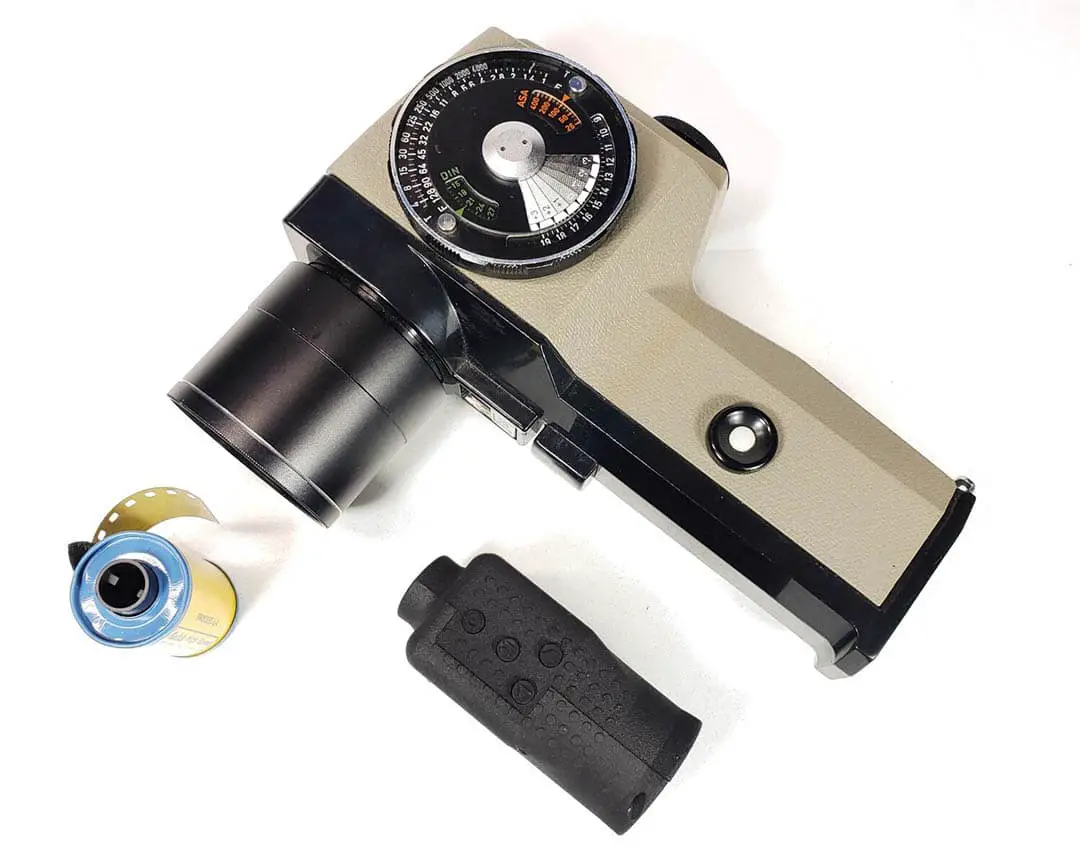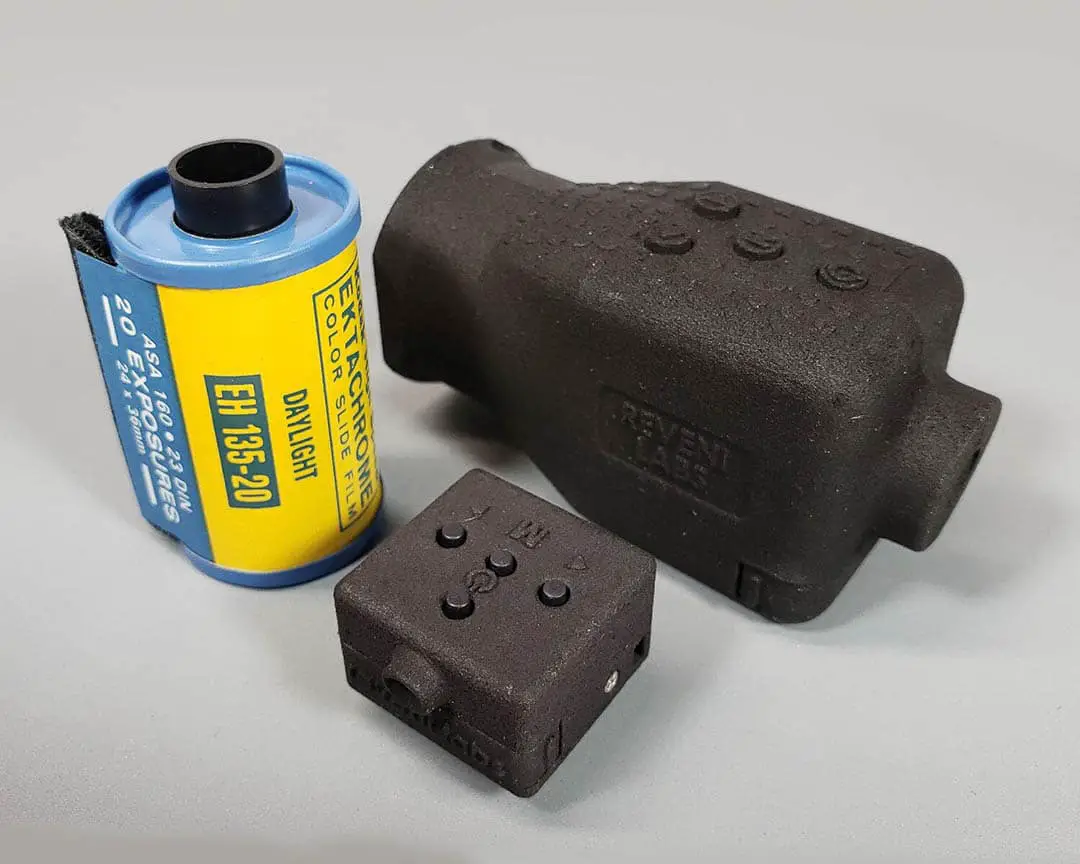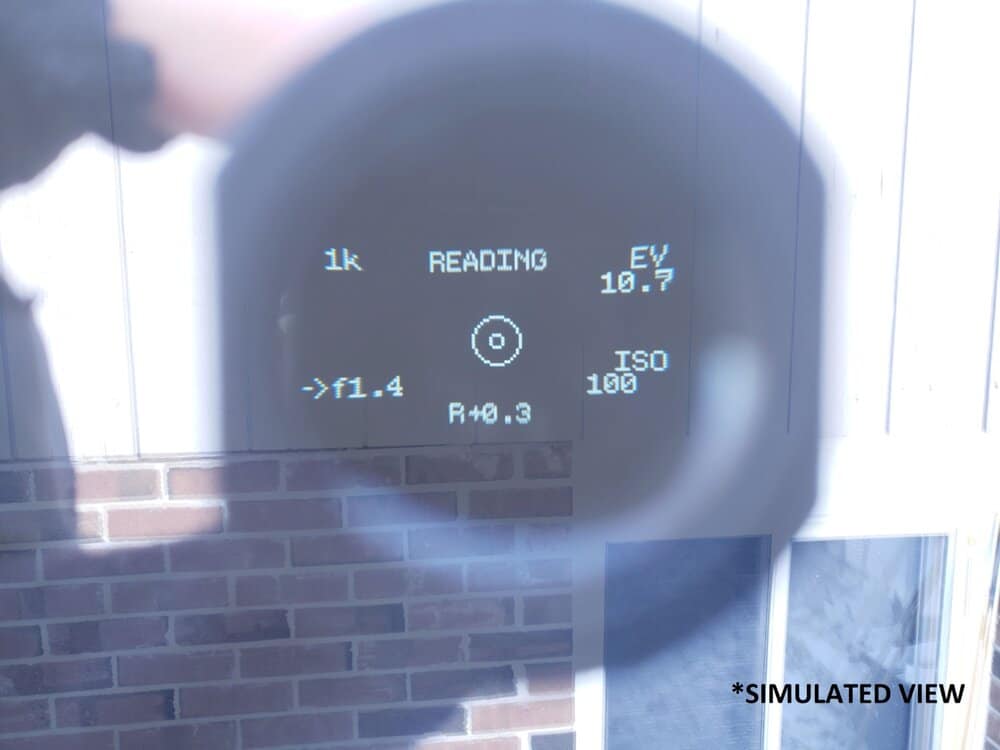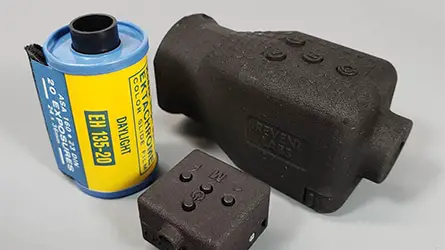
The biggest danger for film photographers is dealing with old technology. Looking around the internet forums, nearly everyone has at one point come across a piece of equipment that broke due to age or maltreatment. Not even top-of-the-line Hasselblads or Leicas can withstand the onslaught brought about by oxygen, water, fungus, and time. Come to think of it, this may be the most compelling reason why NASA temporarily stored their Hassies on the moon.
Most film photography equipment listed on eBay right now had been sitting in the bottoms of closets or boxes left for 10s of years, brought out only because of enthusiastic renewed interest in film photography that’s been driving prices higher across the board.
Reveni Labs founder Matt Bechberger has been a tinkerer since day 1. At the age of 11, he’d scour the streets, collecting parts off old computers left out on the town’s bulk trash day in his hometown of Oakville, Ontario. Since then, he’s learned machining and gained a degree in electronics engineering technology from Sheridan College. Over the years, he’s developed a passion for film photography and has built multiple Frankenstein-esque 35mm and 120 film cameras of his own.
But his latest project has been tackling the problem of burnt-out lightmeters. The older they get, the less reliable they become. Bechberger said the selenium-cell lightmeters from many older models have mostly stopped working because the solar panels simply lose sensitivity over time. Battery-powered lightmeters fared better. But it’s still luck of the draw whether or not they’re burnt out by corrosion from batteries left inside for decades, or connections getting gunked up over time.

This lack of usable lightmeters has kept the value of aftermarket spot meters rising. New ones cost around $500 to $600, Bechberger said, while old, analog ones from the 60s can still fetch a hefty $200-$300 — and that’s without any guarantee that they remain accurate.
These prices drove Bechberger to design his own lightmeter back in his college days to save some money. And in 2019, he decided to make a business out of it.
“It was obvious to me that people wanted this kind of thing. So I set about to build it. And now and now after the success of the first Kickstarter, I decided to quit my job and stick to doing this stuff,” he said.
“People using old film cameras for or using old film cameras in current times, there’s these new problems due to age. It’s like the aftermarket parts for 60 year old cars — there’s new problems, and new solutions to old problems”
His first lightmeter was an evaluative meter that sits on the camera’s accessory shoe. New software technology with small, cheap Fitbit-like screens allowed him to add in additional digital functionality that couldn’t exist in older technologies. Simple features, like ‘the line and dot’ evaluation allows users to plug in their settings and see when the image is under or overexposed. And the best part is with 3D printing and other technological advances, the $125 CAD evaluative meter is just barely larger than a camera’s accessory shoe.
Without telling his parents, he threw the product up on Kickstarter to see what would happen. Within two days, he had over $40,000 from backers.
“I didn’t really tell her until I was running the first Kickstarter, and that one raised like 40 grand in two days. And I just told her, ‘I’ll do this thing in my spare time,’ and then a month later, it was at $124,000 — more than twice my salary from my day job,” Bechberger said.
“My dad was like, ‘do you think you can do it again?’ He said ‘it’s not like you can’t get a job if you fail. There’s not that much risk, really.’”

So he quit his day job and focused on making lightmeters full time. It took six months to get the lightmeters built and shipped, and then another month to get them in stock on his website. And just this year, he started a second Kickstarter for a handheld, $225 spot meter.
Spot meters are used by large and medium format photographers who need to take multiple readings over a scene to get the perfect single exposure that’ll work across an entire scene. Spot meters are typically used in the zone system of evaluating an exposure, in which photographers shoot and develop each shot differently, they are also useful for 35mm photographers who want to be sure they’re exposing for the shadows in a given scene.
The Reveni Labs meter has a simple design that, unlike traditional spot meters, fits in the palm of your hand. This one, designed for large-format photographers, also features two-spot averaging, Precision Method Metering (developed in junction with YouTuber Nick Carver), along with other features that can significantly speed up the metering process.

Unlike traditional meters, this one doesn’t have a typical viewing lens that overlays the exposure readings. Instead, it relies on binocular vision to overlay the reading when you’re staring straight ahead with both eyes open. It’s the same as putting your hand in front of one eye and seeing through it. Bechberger said using the device gives accurate results when looking at any part of a scene from more than 10ft away.
“It’s sort of maybe a little difficult to approach. But once you use it, it’s very intuitive,” Bechberger said.
The design has a number of advantages over the classic designs. For one, modern spot meters are extremely expensive and complex machines. Older used models are heavy, large, and always a risky purchase for their reliability issues as they break down. YouTuber Nick Carver, who created the Precision Method Metering, used in Bechberger’s design compared the Reveni Labs design, and contrasted it with his previous favourite spot meter.
“The Pentax meters are fantastic, but they’re not making more of them. These things are getting older, they’re getting more expensive, and they’re breaking down more often,” Carver said in his YouTube video.
“It’s an incredible meter, it has an incredible design, and it has a unique way of aiming that I’ve never seen on a meter before. One eye looks through the meter, and the other at your subject, and it creates an overlay in your eyes. It’s much more intuitive and accurate than I thought.”
At the time of writing, Bechberger’s lightmeter has raised $214,000 within ten days. The project was fully funded within the first day of its launch.
“I was secretly worried that the first one could be just a flash in the pan. But the second one is doing really well, so it seems like I’m doing well for the moment,” Bechberger said.
“In Esperonto, Reveni means ‘to return’. The people who want to shoot film are coming back, but today we have a new set of problems. Having to develop ourselves, or having to shoot with cameras that have aged. So it’s time to come up with new solutions for old cameras.”

By Daren
Daren is a journalist and wedding photographer based in Vancouver, B.C. He’s been taking personal and professional photos on film since 2017 and began developing and printing his own photos after wanting more control than what local labs could offer. Discover his newest publications at Soft Grain Books, or check out the print shop.

